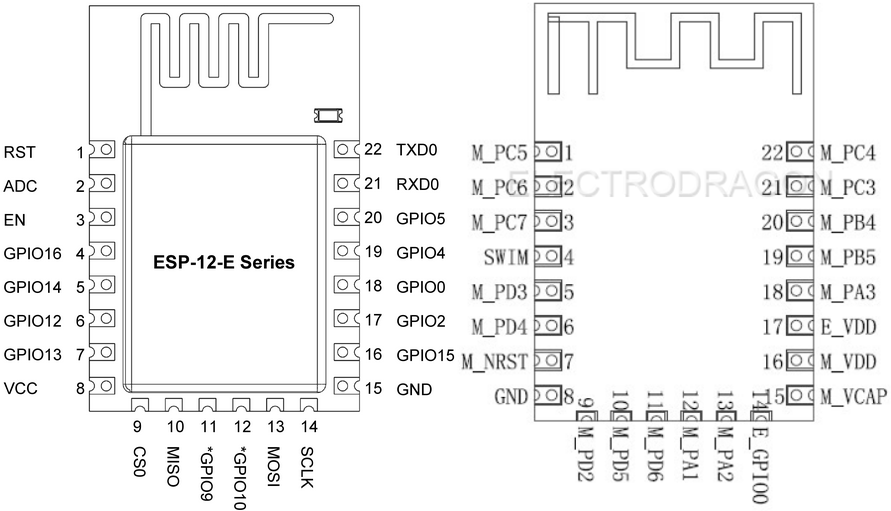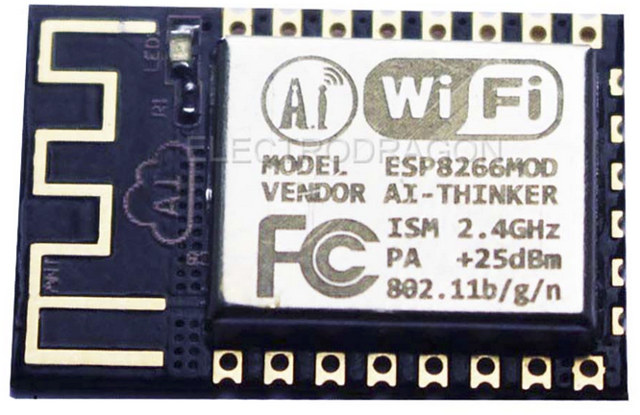ESP8266 WiFi modules can be purchased for less than $3, while some STM8S 8-bit MCUs board sell for just above $1. A.I. Thinker decided to combine both by adding an STMicro STM8S003 micro-controller to ESP-12E module and called that ESP-14.
- WiSoC – Expressif ESP8266-EX WiSoC
- MCU – STMicro STM8S003F3P6 8-bit MCU @ 16 MHz with 1KB RAM, 8KB flash, and 128 bytes EEPROM
- Connectivity – 802.11 b/g/n WiFi
- I/Os –
- STM8: 15 GPIOs also supporting I2C, SPI, UART, and up to 5 10-bit ADC
- ESP8266: E_GPIO0 to select operating mode (running or download)
- Power Supply – 3.3V
- Power Consumption – System Standby mode 70 mA; 0.5 μA shutdown @3.3V
- Dimensions – 24 x 16 mm

STM8S controls ESP8266 by AT commands, and all but one of the I/Os are directly connected to STM8S. I can see at least two advantages: 5 ADC inputs are available, and for battery operated applications you should be able to completely turn off ESP8266 when not using WiFi. Electrodragon has a few more technical details regarding active power consumptions, or you can download ESP-14 product manual in Chinese for the full details.
ESP-14 module can be purchased on Electrodragon for $3.20 + shipping, or just under $5 on Aliexpress including shipping. If you are based on China, the module goes for 13.50 RMB.
Thank you Nanik!

Jean-Luc started CNX Software in 2010 as a part-time endeavor, before quitting his job as a software engineering manager, and starting to write daily news, and reviews full time later in 2011.
Support CNX Software! Donate via cryptocurrencies, become a Patron on Patreon, or purchase goods on Amazon or Aliexpress





